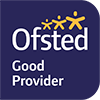Design Technology
Subject Teachers: Mr M Prince, Mr E Webb
The original idea makes design distinctive, function makes it work and quality adds value
Serge Zuev
Design and Technology allows pupils to explore their creativity using a range of materials and techniques. Pupils have the opportunity to design and make products that respond to a wide variety of problems within a range of contexts.
Course Outline and Structure – Key Stage 3
In Year 7 and 8 pupils experience a rotational timetable of the different Design and Technology subjects including Graphics, Resistant Materials and Textiles. Each rotation lasts approximately 8 weeks allowing for pupils to develop their skills in these different areas.
In Year 9 pupils choose two of the specialisms to take for half a year, developing and broadening their technical skills within the subject.
Course Outline and Structure – Key Stage 4
Exam Board: AQA
Design Technology encourages students to be able to design and make prototypes with creativity and originality, using a range of materials and specialist techniques. Students will be enthused and challenged by the range of practical activities possible. The course also requires a detailed theoretical knowledge of all Design Technology specialisms therefore theory lessons will be provided throughout.
The same theory content will be taught regardless of whether pupils choose Paper & board, Timber or Textiles based materials and you will be expected to have a basic understanding of all areas. The specialist subject areas will be taught through practical based teaching.
Timber based materials projects enable you to explore the world of wood; creating interesting solutions to challenging themes. You will learn skills such as creating joints, turning wood and using tools such as jigsaws, routers and planes.
Paper and board explores the world of graphic product design. You will learn about how to use computer aided design programmes and how they can be manipulated to create interesting 3D models. You will learn about print process, graphic design and use industry based technology such as PhotoShop and Illustrator.
Textiles based materials will enable you to learn a variety of textiles skills, techniques and processes, including: weaving and felting; printing, applique and embroidery; and construction methods and garment making.
The course is broken into two units; the first is a written paper which is worth 50% of the GCSE, the second unit is a non-examined assessment, an extended project worth 50% of the overall grade that is about 30 – 35 hours in length.
Extra-Curricular Activities / Clubs:
We currently offer regular after school workshops in the format of a period 7 for GCSE pupils who are completing their controlled assessments. These workshops will focus on ensuring the pupils have all the elements required to submit a thorough project meeting all of the Assessment Objectives.
Key Websites to support learning / Useful resources:


